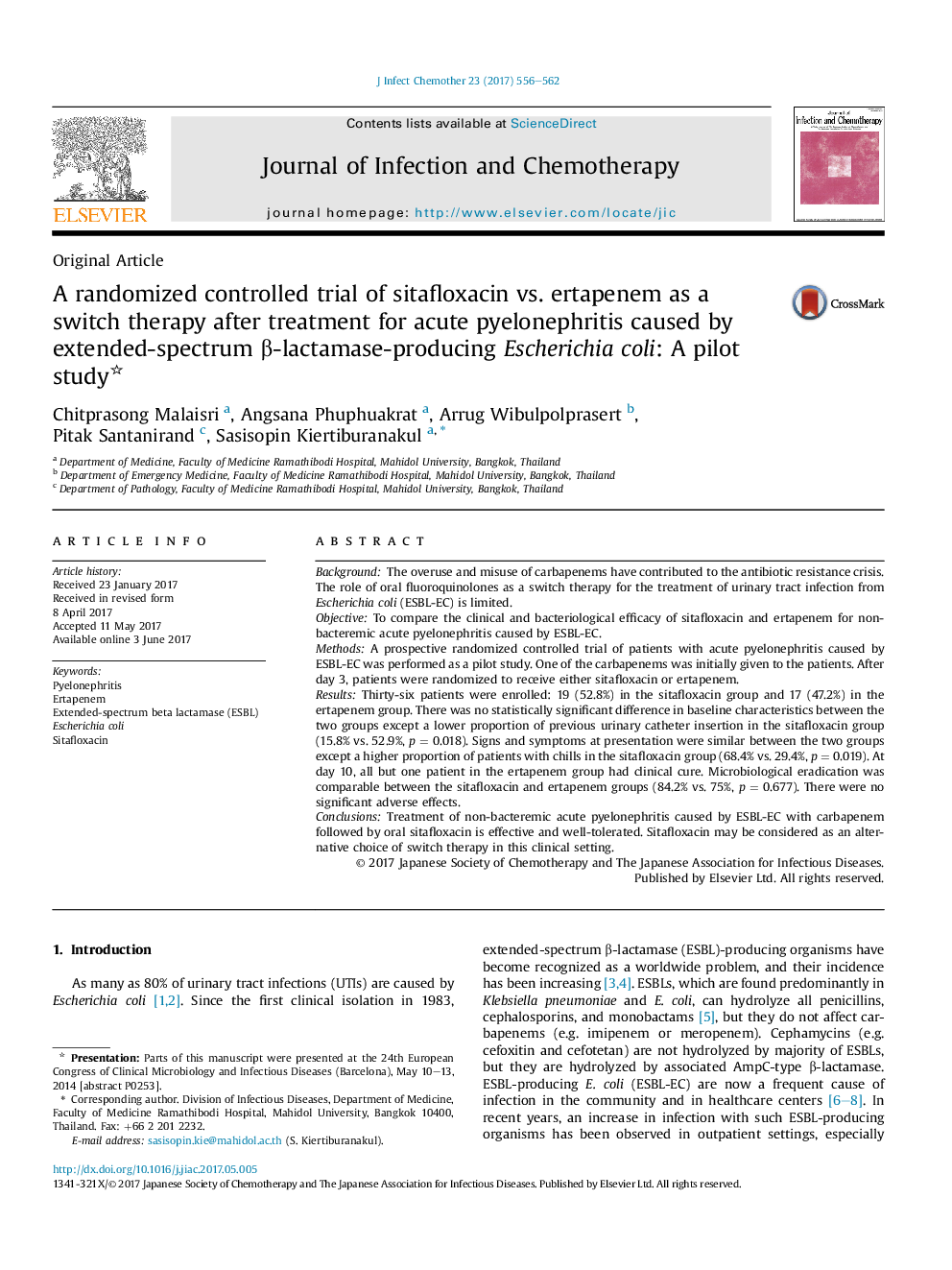| Article ID | Journal | Published Year | Pages | File Type |
|---|---|---|---|---|
| 5668875 | Journal of Infection and Chemotherapy | 2017 | 7 Pages |
BackgroundThe overuse and misuse of carbapenems have contributed to the antibiotic resistance crisis. The role of oral fluoroquinolones as a switch therapy for the treatment of urinary tract infection from Escherichia coli (ESBL-EC) is limited.ObjectiveTo compare the clinical and bacteriological efficacy of sitafloxacin and ertapenem for non-bacteremic acute pyelonephritis caused by ESBL-EC.MethodsA prospective randomized controlled trial of patients with acute pyelonephritis caused by ESBL-EC was performed as a pilot study. One of the carbapenems was initially given to the patients. After day 3, patients were randomized to receive either sitafloxacin or ertapenem.ResultsThirty-six patients were enrolled: 19 (52.8%) in the sitafloxacin group and 17 (47.2%) in the ertapenem group. There was no statistically significant difference in baseline characteristics between the two groups except a lower proportion of previous urinary catheter insertion in the sitafloxacin group (15.8% vs. 52.9%, p = 0.018). Signs and symptoms at presentation were similar between the two groups except a higher proportion of patients with chills in the sitafloxacin group (68.4% vs. 29.4%, p = 0.019). At day 10, all but one patient in the ertapenem group had clinical cure. Microbiological eradication was comparable between the sitafloxacin and ertapenem groups (84.2% vs. 75%, p = 0.677). There were no significant adverse effects.ConclusionsTreatment of non-bacteremic acute pyelonephritis caused by ESBL-EC with carbapenem followed by oral sitafloxacin is effective and well-tolerated. Sitafloxacin may be considered as an alternative choice of switch therapy in this clinical setting.
